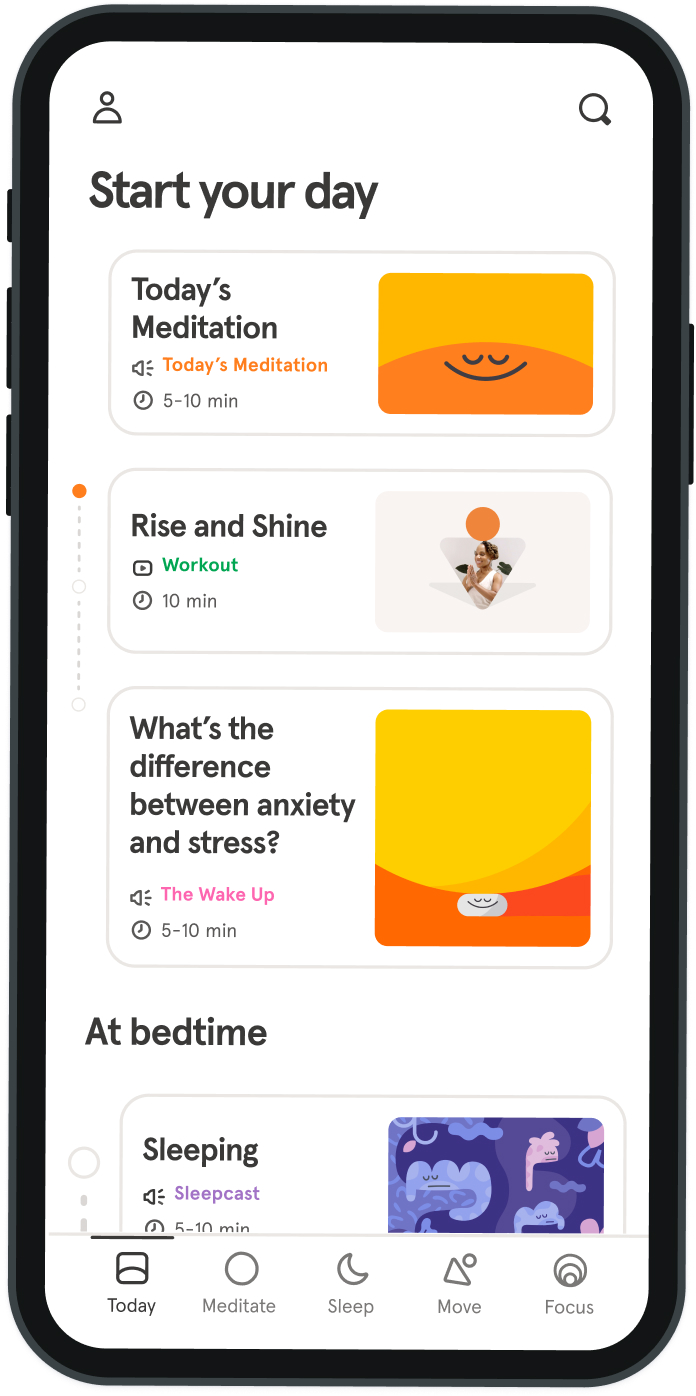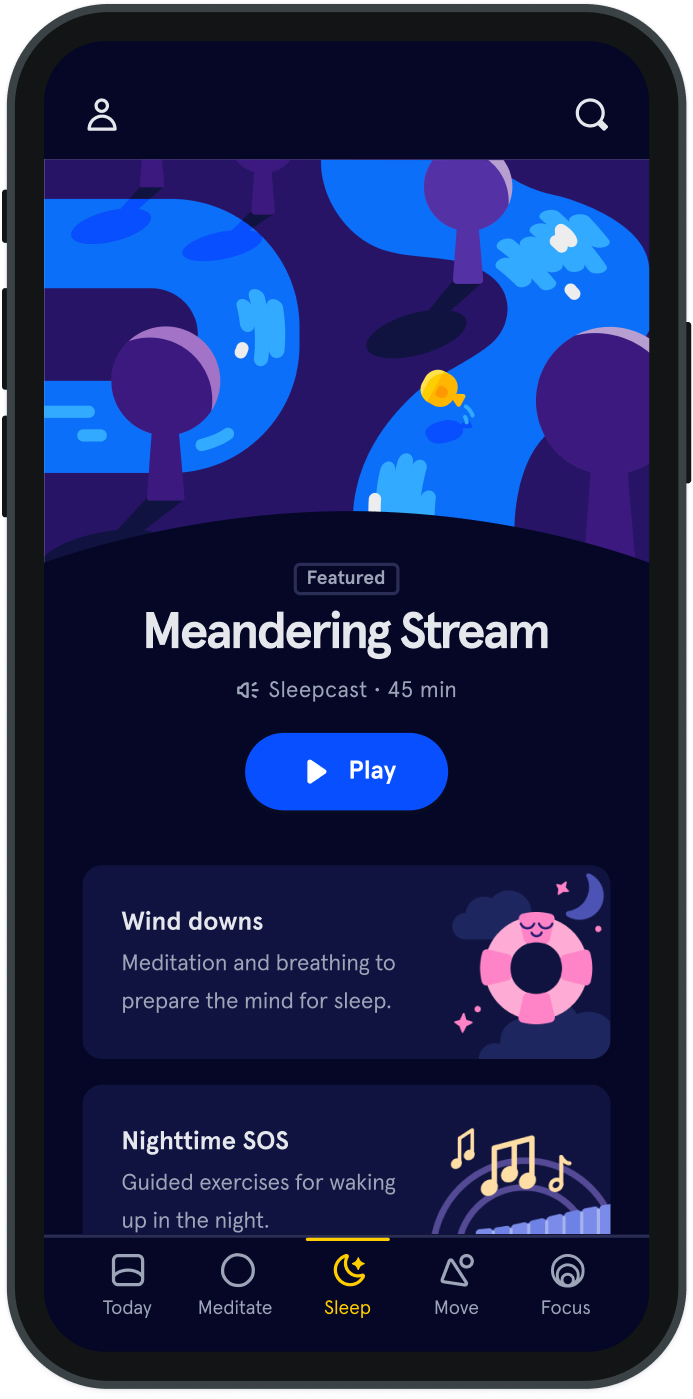4 surprisingly simple ways to get more from your workout
Can mindfulness make you physically stronger? Science says it’s likely true.
Being mindful during exercise means you’re concentrating on the task at hand; like going through a checklist in your head of your form while completing a movement—instead of thinking about your post-workout snack. Using mindful techniques in fitness while lifting weights or while swinging a kettlebell can help prevent injury while ensuring that you’re executing the exercise with proper technique. Not to mention that concentrating on the muscles you’re using can lead to better muscle activation and increased strength. Improved muscle strength helps you get the results you desire even faster, whether that’s better endurance, speed, or improving your vertical leap. Here’s how to leverage mindfulness techniques to enhance your form: 1. Just breathe. Duh, you know you need to do this anyway, but you may be tempted to hold your breath during some exercises (or just be unconsciously doing so), especially while lifting heavy weights. Give yourself a moment to breathe in and out before starting a set of lifting weights. Breathe out while you lift a weight (or execute the most challenging part of the exercise), and breathe in while you lower the weight.
2. Get focused. Focusing on your physical body is just as important as the internal attention you’re mentally applying when you want to improve, according to Gabriele Wulf, Ph.D., a professor at the Department of Kinesiology and Nutrition Sciences at UNLV. Her Motor Performance and Learning Lab research team studies how various internal and external factors influence motor performance and learning, particularly amongst athletes. They found that applying attentional focus to the movement effect (external focus) promotes better performance and enhances learning than when compared to direct attention to the movements themselves (internal focus). Simply put, adopting an external focus on your body (for example pushing against the left side of the ground improved a novice golfer’s rotation during a drive and carry distance of the ball more so than when golfers applied internal focus and only thought about shifting their weight) makes it easier for your brain to automate the entire process of the movement, so your performance is more effective and efficient. Think about the arc you want the kettlebell to go in the next time you execute kettlebell swings! 3. Focus on muscle contraction. Competitive athletes often apply external attentional focus (like we mentioned above) while executing specific intentional tasks, like powerlifting, maximizing jumping height, or improving the accuracy of a throw or swing. According to an article by Brad J. Schoenfeld, Ph.D., CSCS, and Bret Contreras, MA, CSCS, external attentional focus should match the goal of the task and is better used when you want to maximize force or torque for a specific instance. An example might be focusing on the pushing and rotating your body is doing while swinging a golf club to drive the ball for maximum distance and accuracy. But, if you’re trying to maximize muscle activation, an internal focus of attention would seem to be a better choice, the authors say.
Read more: How to break bad habits with your brain
Bodybuilders, physique athletes, and others seeking maximal hypertrophy (building muscles) will conceivably benefit by focusing on the target muscle during an exercise rather than on the outcome or environment. If you want to geek out on why that happens, their article states that “this is likely due to molecular signaling for the three primary mechanisms of muscular hypertrophy, namely mechanical tension, metabolic stress, and muscle damage, which are increased when the exerciser focuses their attention internally which could ultimately result in greater muscular development for a given exercise and load.” Basically, if your goal is to build larger biceps through dumbbell curls, set your mind on the bicep muscle itself rather than the movement of curling the dumbbell and you could find that this leads to bigger gains. 4. Seek out positive feedback. Whether it’s a buddy who’s watching your track sprints and acknowledging your impeccable posture, or a virtual Nike trainer telling you that you’re doing a great job during an NTC workout, receiving positive feedback can enhance your performance. In a 2012 study Wulf conducted on elite runners, when subjects received positive feedback (even if it wasn’t true) every two minutes while they were running on a treadmill, they reported feeling less fatigued and had a perception of greater ease of running than a control group that didn’t receive any feedback. The study showed that thinking that you have good form can help runners decrease oxygen intake and increase their movement efficiency. Consider going for a run with a virtual coach to help you feel strong while logging miles to maintain proper form, which means you’re less likely to get injured.


Be kind to your mind
- Access the full library of 500+ meditations on everything from stress, to resilience, to compassion
- Put your mind to bed with sleep sounds, music, and wind-down exercises
- Make mindfulness a part of your daily routine with tension-releasing workouts, relaxing yoga, Focus music playlists, and more
Meditation and mindfulness for any mind, any mood, any goal

Stay in the loop
Be the first to get updates on our latest content, special offers, and new features.
By signing up, you’re agreeing to receive marketing emails from Headspace. You can unsubscribe at any time. For more details, check out our Privacy Policy.
- © 2025 Headspace Inc.
- Terms & conditions
- Privacy policy
- Consumer Health Data
- Your privacy choices
- CA Privacy Notice
